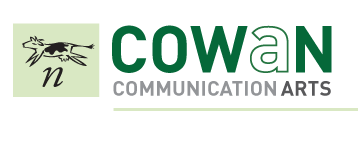Resources
The Creative Work Plan
News Interview Survival Tips
![]()
Creative Work Plan
The Creative Work Plan is a tool used by Cowan Communication Arts at the beginning of a project that helps to provide a clear understanding of the client’s communications and marketing goals and objectives.
1. Key Fact
The key fact is the one fact most relevant to the advertising of the given brand at a given time. It must be a fact in which advertising takes action.
2. Problem Ads Must Solve
The statement of the problem should be related to the key fact, and should be stated in terms of the prospect. This is stated in terms of what the consumer needs.
3. Advertising Objective
How the advertising specifically proposes to solve the problem.
4. Creative Strategy
A. Prospect Definition
Demographics, psychographics, and product usage.
B. Principle Competition
Competing forces that work against your message and goals. This can be other advertising. It can also be issues such as environment, pricing and economy.
C. Consumer Benefit
The consumer benefit should be expressed in terms of the specific consumer you are targeting. Not just any and/or all consumers. Benefit should be as competitive as possible, not merely generic. Benefit should not be a product attribute.
D. Reason Why
It should state why YOU can make the offer. It should come out of the product performance. It should be competitive. It should be a single fact.
5. Mandatories
Legal restrictions, company or organizational requirements, etc.
![]()
News Interview Survival Tips
News Interview Survival Tips help to prepare clients for interaction with reporters during public outreach efforts.
1. Prepare your agenda for the interview. This can include a list of points you want to make, topics you want to raise and information you want on the record.
2. Tell your story. Deliver your quotes and anecdotes, and cover your agenda items.
3. Listen carefully to each question. “Off the wall” questions may be a signal that the interviewer doesn’t understand the topic. Offer an overview on the spot before proceeding. Promise to provide written background if necessary.
4. Keep track of your role as an official spokesperson for your organization, even if you are speaking for an industry or member of another organization.
5. If you get angry, count to ten before proceeding. Relax and do not show your anger. Instead calmly and methodically answer the questions as best you can.
6. Avoid argument with the reporter. Your response may be reported without any mention of the provocation.
7. If interrupted in the middle of a thought, proceed with your original answer before addressing the next question.
8. Challenge any efforts to put words in your mouth. Carefully listen to any request for you to endorse a paraphrase of your remarks.
9. If presented a laundry list of questions, identify the one you will answer. It is not your responsibility to keep track of the parts of a multiple-part question.
10. Don’t play verbal ping pong. Broaden your answers to make your points.
11. Present your main point or conclusion first, followed by supporting points or arguments. An umbrella statement helps a reporter follow your logic and supporting comments, especially on complicated topics.
12. Speak plainly. Jargon familiar to insiders may have no meaning to the public.
13. Don’t be evasive. Evasiveness is usually interpreted as a signal you have something to hide.
14. Don’t pass the buck. Accept your responsibility as the representative of your organization.
15. If you do not know the answer, say so, offer to find out and then provide the information as quickly as possible. Make sure to deliver any information that you have committed to providing.
16. If you cannot divulge information, state why in a matter-of-fact way.
17. Be positive, not defensive. Take the trouble to make positive statements of fact instead of denying or refuting the comments of others.
18. Don’t attack other organizations or competitors. The accusation may preempt the rest of the interview.
19. Above all, tell the truth. Reporters keep track of individuals and organizations who “burn” them and remember for many years. They also think they are doing the right thing by warning their colleagues about sources who have failed to tell the truth.
